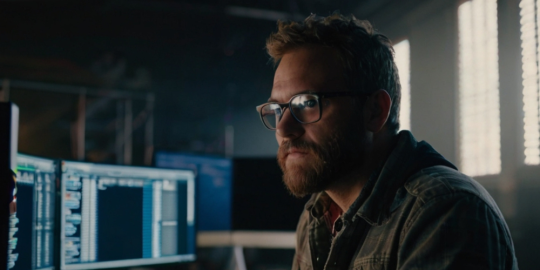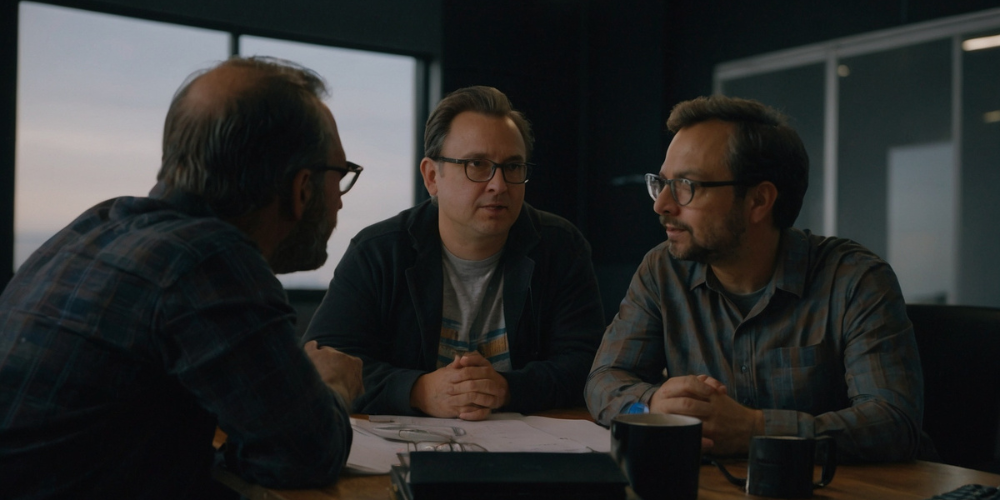
Introduction to Iterative Development
In the rapidly evolving world of game development, iterative processes stand as a cornerstone methodology for crafting engaging and polished games. This time-tested approach involves gradually improving a game by cyclically prototyping, testing, analyzing, and refining the product. As a game developer, I've been deeply influenced by this method of development, which has allowed for constant feedback integration that ultimately shaped my game into an experience players love.
The Genesis of an Idea
The journey embarked upon with my game was in its infancy, marked by a rough concept that scarcely resembled the final product I envisioned. This nascent blueprint was brimming with boundless ambition, yet it starkly lacked the intricate details necessary to bring it to life. Much like the countless developers who have tread this path before me, my initial clarity was clouded and muddled by what I perceived to be groundbreaking mechanics and storytelling elements—novel ideas seemingly untouched by previous creators. My mind buzzed with scenarios and features that, in theory, appeared revolutionary. However, without the crucial step of actual player interaction and feedback, these grandiose concepts were nothing more than unproven assumptions waiting within the crucible of real-world testing.
First Iteration: Facing Reality
 Embracing iterative development meant rolling out an initial playable version to a closed group of testers. This stage marked a crucial phase where the game began to take its first steps from concept to reality. It wasn't long before their feedback started steering the project in new, sometimes unexpected directions. The immediate responses from testers provided insight that no internal brainstorming session could ever replicate. Initial criticism can be harsh but it is invaluable; it serves as an unfiltered barometer for what works and what doesn’t.
Embracing iterative development meant rolling out an initial playable version to a closed group of testers. This stage marked a crucial phase where the game began to take its first steps from concept to reality. It wasn't long before their feedback started steering the project in new, sometimes unexpected directions. The immediate responses from testers provided insight that no internal brainstorming session could ever replicate. Initial criticism can be harsh but it is invaluable; it serves as an unfiltered barometer for what works and what doesn’t.
Understanding where a mechanic fails or succeeds is instrumental in refining the gaming experience. These early evaluations highlighted areas that needed improvement and often sparked innovative solutions that significantly enhanced gameplay. The back-and-forth nature of this process cultivated a richer, more engaging product, ultimately making the end result far more polished than if developed in isolation. Thus, iterative development not only streamlines the testing phase but also fosters creativity and adaptive design thinking throughout the lifecycle of the project.
Subsequent Rounds: Learning and Evolving
Each round of updates was followed by more feedback, which became the driving force behind substantial changes and refinements. On several occasions, features I initially believed would be fan favorites turned out to be inconsequential or even irritating to players. I found that elements designed with the intention of enhancing user experience sometimes missed the mark entirely, leading to unexpected frustration or indifference among the player base.
By stripping away these superfluous components that didn’t resonate and honing in on aspects that garnered positive responses, the iterative process brought a renewed sense of clarity and focus to the gameplay. This not only helped in creating a more engaging and cohesive experience but also paved the way for subtle improvements that might have otherwise been overlooked. The continuous loop of updates and player feedback gradually sculpted an environment where each change incorporated valuable insights from real-world interactions, ultimately fostering a game that truly reflected its community’s desires and preferences.
Pivotal Changes from Player Insights

One defining moment in the development process was when we realized that one of our core mechanics, which we had initially believed would add depth and engagement, was actually too complex and ended up deterring players rather than engaging them. The feedback from our user testing sessions made it clear that the complexity was creating a barrier rather than enhancing the gaming experience.
Understanding the importance of this insight, we embarked on a series of iterations, each informed by direct user commentaries. By carefully analyzing player feedback and observing their interactions with the mechanic, we were able to simplify it without stripping away its challenging aspects. This iterative process gradually transformed the mechanic into something both intuitive and engaging, ultimately striking a balance that is essential to any successful game design. The evolution of this core mechanic not only improved player satisfaction but also reinforced our belief in the value of listening to and incorporating user feedback as an integral part of game development.
Incorporating Feedback into Storytelling
Moving beyond the fundamental mechanics of gameplay, the narrative structure and thematic elements within our creation experienced a profound evolution, largely as a consequence of player interaction and feedback. What was once envisaged as marginal or incidental story content gradually took on a new importance, morphing into pivotal components of the core plotline due to an unexpectedly positive reception from our early player base. These players expressed deep connections with certain aspects that had not initially been intended to bear significant weight; their enthusiasm and resonance with these elements could not be ignored.
As a result, we found ourselves engaging in an unintentional yet tremendously valuable collaboration where the boundary between creator and audience began to blur. Participants who were meant to merely experience the narrative became partial co-authors through their interactions and recommendations. This integrative process drew diverse viewpoints from a wide demographic spectrum, effectively bursting the confines of my personal creative echo chamber. It exposed me to fresh angles I might have never considered on my own, ultimately leading to a richer, more multifaceted storytelling experience that benefitted immensely from this influx of external perspectives.
The Final Product: A Testament to Iterative Development

The culmination of all these iterative cycles resulted in something far greater than what was originally envisioned – a cohesive, engaging game built on solid mechanics and a compelling narrative garnered from continuous community involvement. This transformative journey began with a simple concept that gradually evolved through countless brainstorming sessions, feedback loops, and development sprints. Each phase of iteration brought with it a deeper understanding of player preferences and an opportunity to refine the game's core components, such as character development, plot pacing, and interactive gameplay elements.
Furthermore, the unwavering commitment to integrating player feedback played an instrumental role in shaping the game's dynamic world and ensuring its alignment with the community’s expectations. Open forums, beta testing phases, and social media interactions provided invaluable insights into what truly resonated with players. These insights not only enhanced the gameplay experience but also fostered a sense of ownership within the community, making them feel like integral contributors to the creative process.
Summarizing the Evolutionary Journey
The principle of iterative development truly transcends being merely a practice; it embodies a philosophy that wholeheartedly embraces change and acknowledges the indispensable role of player feedback in crafting memorable gaming experiences. Reflecting on how my own project evolved from its nascent stages through countless iterations and loops of user interaction underscores this ideology with remarkable clarity. Initially, the concept was raw and unrefined, barely hinting at its future potential. However, as players interacted with the game and provided their invaluable insights, each cycle of feedback became a stepping stone toward refinement.
Sometimes, I faced critical assessments that challenged my vision or required overhauling beloved features for greater appeal to users. These moments, though tough to navigate, proved vital for growth and enhancement. With every iteration, I found myself dismantling and reconstructing elements to better align with player preferences and expectations. The process wasn't merely about fixing bugs or polishing graphics; it was an immersive journey combining creativity with pragmatism.
Each development loop further honed not just any game but 'the' game—a distinctive experience shaped by the collaborative efforts between its creator and its future players. This collaborative essence ensured the game resonated more profoundly with its audience because they had a hand in shaping its progression. In embracing iterative development, I realized that games aren't created in isolation; they thrive through continuous dialogue with their community, ultimately achieving a form of perfection that is both dynamic and deeply connected to those it aims to entertain.